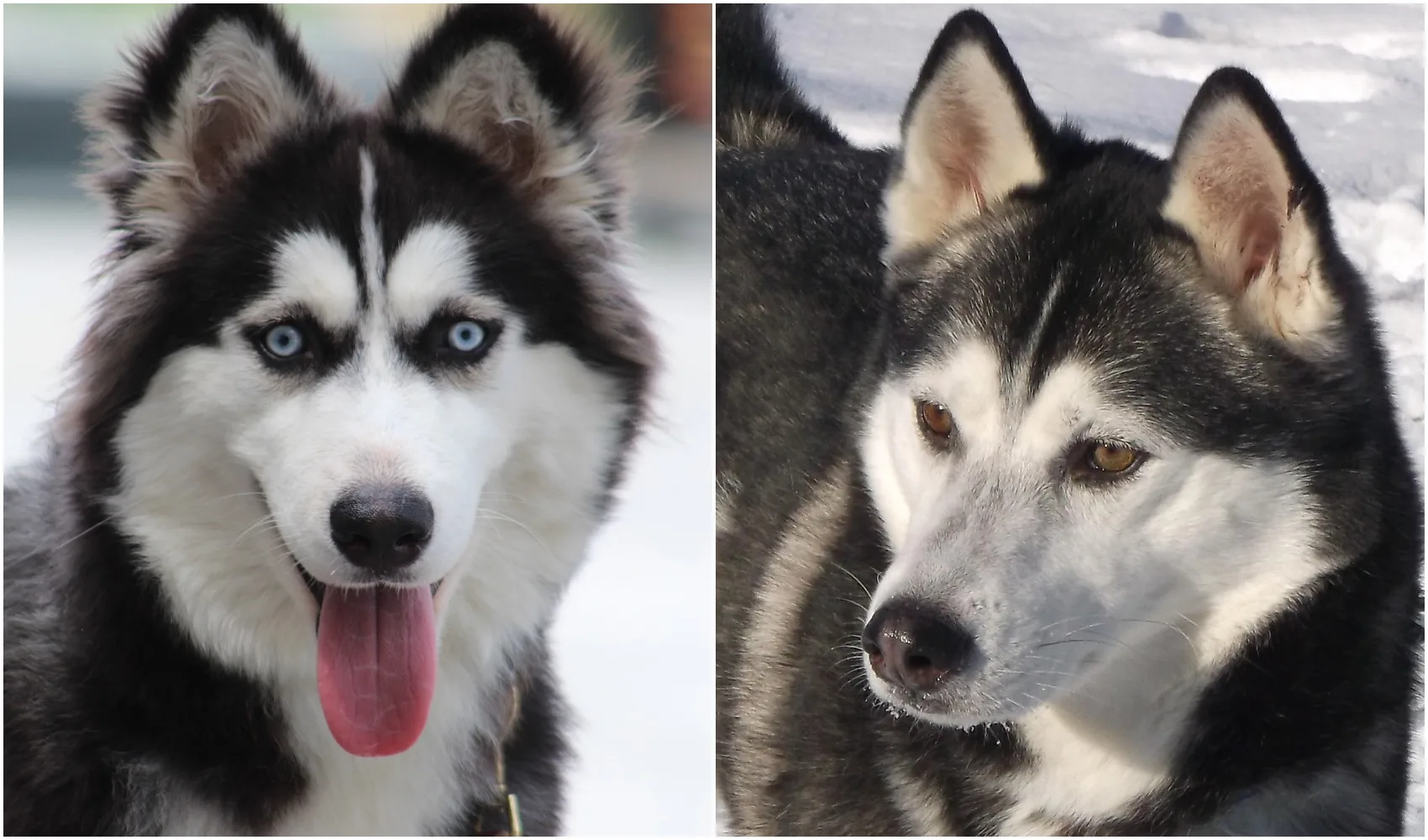We all have heard about the Husky. Their ice-blue eyes, big personality, and wolf-like appearance have stolen the hearts of many dog lovers. But did you know that there are actually two different types of the Husky? In this article we will tell you everything that you need to know about the Alaskan Husky VS Siberian Husky.
But first of all, know that the difference aren’t too huge. So mixing these two up isn’t a huge deal at all. Little differs from one to the other, but understanding the basic characteristics will help you find out which one suits you best.
Origins of Alaskan and Siberian Husky
The two husky breeds came from separate parts of the world, as their names suggest. While the Siberian Huskies are thought to have originated in Eastern Siberia and have been there for thousands of years, the Alaskan Husky was introduced to the world by Alaskan and Canadian mushers for everyday activities. In truth, the Alaskan Husky is a mixed breed since it was crossbred with other sled dogs to produce the greatest sled dog possible. To summarize, Alaskan Huskies are a cross between Siberian Huskies, Greyhounds, German Pointers, and Malamutes. Since the Alaskan Husky is a crossbreed, he isn’t recognized by the American Kennel Club.
How are the dogs used?
When it comes to the Alaskan Husky vs. Siberian Husky debate, another important distinction is how the dogs are employed. The Siberian Husky is a domesticated dog breed that is one of the most popular in the world. Despite their stubbornness, they are gregarious, affectionate, and kind, making them perfect for training to higher levels. The majority of Siberian Huskies are kept as pets rather than sled dogs.
The Alaskan Husky, on the other hand, is not a family dog. Not because they lack the qualities required to be a caring companion and protector. They’re still utilized as working sled dogs, for the most part. In addition, their upbringing makes them less amicable than Siberians. Nonetheless, they can be kept as pets.
Appearance: Alaskan Husky VS Siberian Husky
When it comes to size and height, the Alaskan Husky can grow up to 25.5 – 26 inches tall, compared to the Siberian Husky’s 24 inches. Both dogs are of middle size, and when it comes to weight, something interesting happens. Despite the fact that the Siberian Husky is smaller than the Alaskan Husky, the Siberians weigh more. They can weigh up to 65 pounds, compared to 55 pounds for Alaskans. Both breeds have a medium-length double-layered coat.
When talking about their colors and markings, the Siberian is usually White, Black, Gray, Red, or Agouti. At the same time, the Alaskan can be any of these hues, as well as all black or all white.
The color of the eyes can also help you tell the difference between a Siberian Husky and an Alaskan Husky. The Siberian has blue eyes by default, although they can also have brown, green, or brown eyes. It’s not totally apparent why Siberian Husky dogs can have partially colored eyes at times, but it’s a possibility.
The eyes of an Alaskan Husky are normally brown. However, a fascinating phenomenon called heterochromia occurs here as well. Heterochromia (varying hues for a single dog’s eyes) in Alaskan Husky dogs is linked to the merle gene. Patches of color on the coat and blue or odd-colored eyes are caused by this genetic pattern.
Temperament
The way each Husky breed was bred determines their disposition. The Chukchi Tribe of Siberia reared Siberian Huskies for work, but they were kept inside their tents overnight and people shared meals with the dogs, making them much friendlier. Siberian Huskies are wonderful family dogs, and if your children are fond of them, they will like this instruction on how to draw a Husky.
Because the Alaskan Husky was primarily bred for working purposes, it lacks the lovable aspect of the breed. Of course, this isn’t to say that an Alaskan Husky can’t be a wonderful companion if properly cared for, but a Siberian will be more naturally the fun friend we all see on the internet.
It’s important to note that neither Husky is aggressive or distrustful by nature. So, despite their solemn demeanor and wolf-like appearance, they won’t make good guard dogs since they lack the necessary suspicion and aggression.
Intelligence and Training
The Huskies are both averagely intelligent. Due to their natural stubbornness, you won’t have an easy time training either of them. The Siberian will prove to be more clever in the long term, which is assumed to be due to earlier domestication. However, once you have their strong will, the Alaskan Husky will be rather easy to teach.
Conclusion
With the hope that the information presented above has helped you understand the essential distinctions between the two Husky breeds, all that remains is for you to weigh all of these factors and pick which is ideal for you. We also invite Husky owners, and others, to contribute their understanding about these two breeds by adding to the points we’ve made. We’re confident that the many years you’ve spent with your four-legged companion have equipped you with all the knowledge you’ll need to discover further differences or intriguing facts!
We have so much more content about Huskies! Here is just some of it:

